Sharmajee Ki Beti: Aspires To Be An Everywoman Tale, Ends As No Woman's Story
This is #CriticalMargin, where Ishita Sengupta gets contemplative over new Hindi films and shows
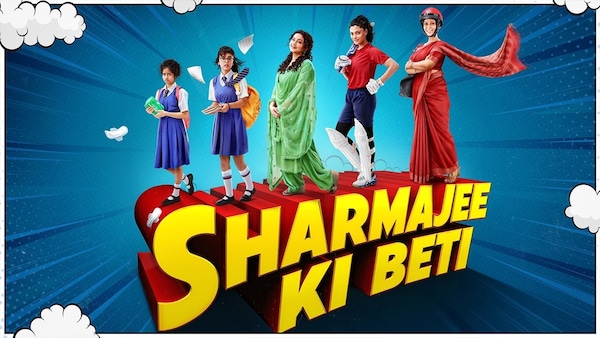
Last Updated: 02.21 AM, Jun 30, 2024
TAHIRA KASHYAP KHURRANA’s Sharmajee Ki Beti has all the problems that films revolving around women share and none of the astuteness they demand. Like lesser outings, her debut feature (she has helmed short films before) depicts the central female characters as messengers who are cherry picked to drive an overwrought message home with no sense of interiority. They are a means to an end in a story that not just unfolds as reiteration but also goes through every beat of the familiar turf with easy detours and low-stake complexity.
In Mumbai, three women have more in common than their surname. There is Jyoti Sharma (Sakshi Tanwar), a middle-class tuition teacher who, along with her supportive husband Sudhir (Sharib Hashmi continuing his streak of playing the in-house caring spouse), works round the clock to provide their child with a good education. He washes her scooter and shoulders domestic responsibilities. The only problem in this neat arrangement is that their daughter, Swati (Vanshika Taparia), hates her mother. The sight of her father working makes sense to her but mother’s absorption with her career does not. Besides, Jyoti’s preoccupation with work leads to Swati, manoeuvring the prickly teen years, feeling overlooked and slighted.
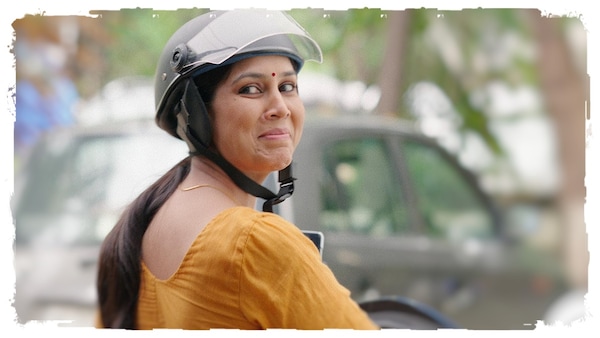
Then there is Kiran Sharma (Divya Dutta), a homemaker struggling to get attention from her self-reliant mother and busy husband (Parvin Dabas). It has been a year since she relocated to Mumbai from Patiala but has been unsuccessful in making friends. Kiran spends her days trying to convince people in her society to play tambola (an indoor group game) like she used to do back at home, but no one has the time for such indulgences. The other Sharma is Kiran’s neighbour, Tanvi (Saiyami Kher), a budding cricketer who has to constantly shrink herself in her relationship to please her boyfriend Rohan (Ravgeet Singh), a struggling actor who has more faith in himself than his partner.
Kashyap, who has written the dialogues, screenplay and directed the film (as also furnished the voice-over at the opening sequences) introduces these familiar issues only to treat them with superficial commitment that does more harm than good — it makes light of some very present concerns. Each of these loosely-connected segments (Kiran’s daughter Gurveen, essayed by Arista Mehta, and Swati are best friends) unravel as highlights that follow the arc of crisis and resolution with facile simplicity. Swati does not respect her mother? The film promptly includes a scene where Jyoti is felicitated as the best teacher at her coaching institute in the presence of her daughter. Looking at others applauding, Swati’s long-accrued, teenage-borne resentment washes away in an instant. Rohan does not believe in Tanvi? Why not make Tanvi the best cricketer who ends up being included in the Indian team?
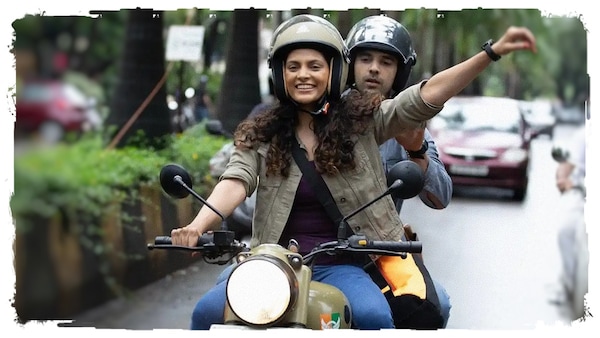
The problem with these easy solutions is twofold: they are sweeping and they sidestep weighted complications like an adolescent gathering resentment against her working mother and a professional being stuck in a relationship that makes her feel less of herself. The problem is also that it begs the most obvious question: what if these women were not good at their jobs? Would that make them less worthy of being recipients of respect? Kashyap’s lack of curiosity to investigate these intricacies makes Sharmajee Ki Beti a lesser film. It also stunts the other curiosities she fills her outing with, like Swati and Guvreen discussing teenage matters relating to hormones and periods. The queries are designed as funny but they translate as churlish due to bad writing.
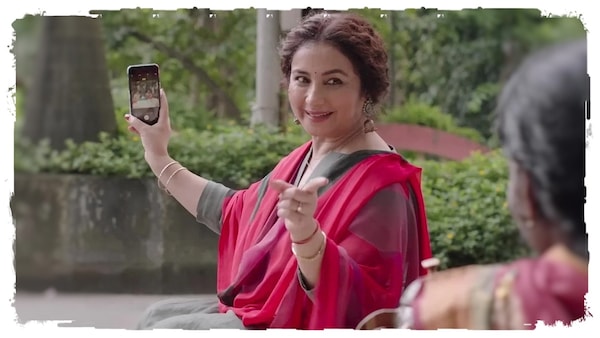
There is a prolonged subplot of Swati fretting over not getting her periods when everyone else in her class has. She complains to Guvreen about it; she snaps at her mother regarding it. All of these are legitimate outbursts but they feel self-serving for they are written by someone who has little idea about the world she has crafted. There is no nuance to the confusion, no patience to the restlessness. All that there is are ‘funny’ lines mouthed by 14-year-olds which sound like adults speaking through them — at one point, Swati tells Guvreen, “Meri hormones kisi kiraani ki dukaan mein chale gaye hain” (My hormones must have gone to a grocery store) — and knee jerk clarity to what is inherently a journey. No less self-serving are scenes depicting at least two characters reading 7 Sins of Being a Mother, the 2021 novel written by Kashyap herself, which add nothing to the plot and come across as belated promotions.
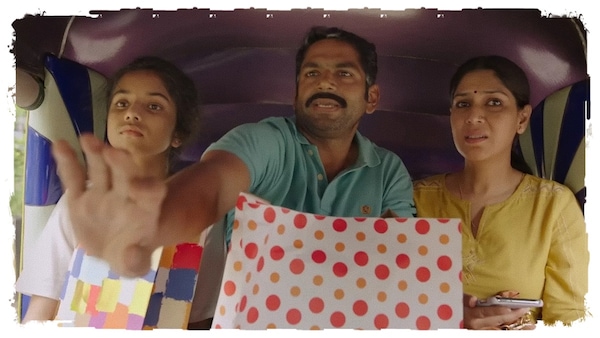
Sharmajee Ki Beti also repeats the nagging problem of portraying the female talent without making the effort of showing them make the effort. The film unspools with the assumption that women do not need to hone their craft, thus inadvertently reducing the labour that goes into it. For instance, even as the film showcases Jyoti’s perseverance being celebrated and students fawning over her, there is not one single scene of her teaching or preparing for her classes. Ditto for Tanvi, who we see playing cricket once; unsurprisingly, it is also when she hits all the bowlers for boundaries.
Even then, it is Kiran, the ignored homemaker with an hyperactive imagination, who gets the shortest end of the stick. This track is probably closest to Kashyap’s life, given that she too relocated to Mumbai from Chandigarh, but it is dealt with with startling evasiveness. The filmmaker imbues the character with generic goodness with no personhood. Who is Kiran besides the amiable woman wanting to play tambola with her society members? She is increasingly framed in mirror shots, probably hinting at her feeling unseen but the visual design fails to enliven crucial details. For instance, it does not acknowledge basic queries: if her husband overlooked her, did that have any bearing on her desires and wants? Does she even want to be with him or is marriage merely a social bind for her? We see her buying freely. Does she have financial, or any, agency?
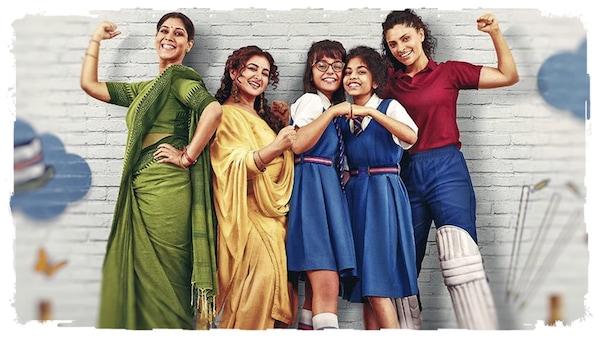
Sharmajee Ki Beti provides no answers, not even to that outrightly puzzling confrontation scene between Kiran and her husband which proceeds like they had just met and not lived together for many years. One can argue that the underlying assumption is that they are estranged but the staging of the scene speaks more of awkwardness than discomfort. But what is most irksome is how performatively Kashyap goes about presenting the idea of a housewife with plenty of time in hand. There is none of the inventiveness of Tumhari Sulu (2017) or the implication of English Vinglish (2012). There is only more and more nicety stacked together.
Kashyap’s feature abounds with thorny issues — the performances are strictly middling, the writing is forgettable, and the dialogues crude. Then there is this naive premise of making everyone around the women doubtful and hostile, only for them to rise triumphant at the end. But none of these issues is as egregious as the fact that the film assembles competent actors, designs a narrative around women, and then lets them marinate in a tale that refuses to earn their presence. For a film titled Sharmajee Ki Beti, implying that it could be about everywoman, it concludes as a story about no woman.
The views expressed in this column are those of the author and do not necessarily reflect the official policy or position of OTTplay. The author is solely responsible for any claims arising out of the content of this column.
